Foundry is a very calm, pleasant building game I'd play if I got tired of several other ones
The early access release of this new automation game feels a little light on challenge.
The first sign of a building/automation game that's destined to really get its hooks into me is the gulf between screenshots from veteran players and the reality of what I can build.
Me: Check it out! I ran this conveyer belt of metal rods into a container, and then that container feeds them into a machine that makes some other thing. Isn't that cool?
Foundry's developers, streaming the game: Behold our megalopolis of steel and cinder that stretches from horizon to horizon. We have humbled the earth and declared ourselves Gods of Efficiency in the name of eternal production.
After playing a few hours of Foundry's early access build, which is out Thursday, I can see the core pieces are present to get me from point A to B. At first I'm laying down simple foundation blocks and slapping smelters onto them to process some ore, and within a couple hours I'm snaking conveyor belts in between rows of machines that mash items together into more complex ingredients I'll soon need in vast quantities. There are a few tutorial instructions guiding me through what to build first to get my operation up and running, but after that the objectives provide looser goals for expansion.
Build a better power plant. Lay down 16 smelters to supercharge your production. Build that stuff however you want. Unlike in automation game Satisfactory, which I played like an absolute madman in 2020 and 2021, Foundry seems incredibly forgiving from the start. For example, if you want to build any components by hand in Satisfactory, you have to stand at a craft bench and hold a button, which incentivizes automating that process ASAP. In Foundry, I was surprised to find I can click any crafting recipe and set it to magically start constructing itself in my pocket as long as I have the component ingredients. To unlock new schematics in Foundry's tech tree I need Science Packs, which are made from Machinery Parts and Technum Rods. Machinery Parts are built from an ingredient of their own, but as long as I have those in my inventory, the game will do everything for me: I just right-click on the Science Pack to queue up five of them, and it'll pull from my pile of Plates to build as many Machinery Parts as it needs while I hop around doing other things.
There are many more conveniences in Foundry. A couple biomass burning power plants can keep an upstart operation powered for quite a while; there's no need to mess with power lines, because any building touching a connected metal floor tile will automatically draw power; the starter drill can tear through dirt and stone in seconds, and disintegrate a 50-foot-tall tree just as quickly as a sapling. There are no creatures or hazards of any kind on the map. There is no fall damage.
These differences make Foundry extremely chill, but also, for me, a little bit dull. The voxel world is pretty, even striking when you take in the skybox—but it is utterly still. It poses no challenge greater than the time it takes to hop up a blocky mountain or dig deep into the earth. This world exists purely as a canvas for me to create on, but without some constraints or obstacles to overcome a certain blandness hangs over the whole enterprise.
Keep up to date with the most important stories and the best deals, as picked by the PC Gamer team.
This is a tricky balance to strike in a building game, and I'm sure plenty of players bounced off some of Satisfactory's harder edges. In that game, my co-op partner and I spent our early hours cursing at our power grid for getting overloaded as we tried to ramp up production, sending us on an hours-long detour to build a whole new oil-powered generator facility. On our quest to find the right spot for that power facility we had to contend with creatures that could kill us, building staircases down the sides of enormous cliffs that we'd die if we fell off, and figuring out how to route power back to our production lines. Sometimes that could be frustrating, but it's also the heart of the game—the satisfaction comes from having a major roadblock appear in front of you and going on an hours-long detour to science the shit out of it. That's where the triumph comes from, and the delayed payoff makes tackling the next goal that much more exciting.
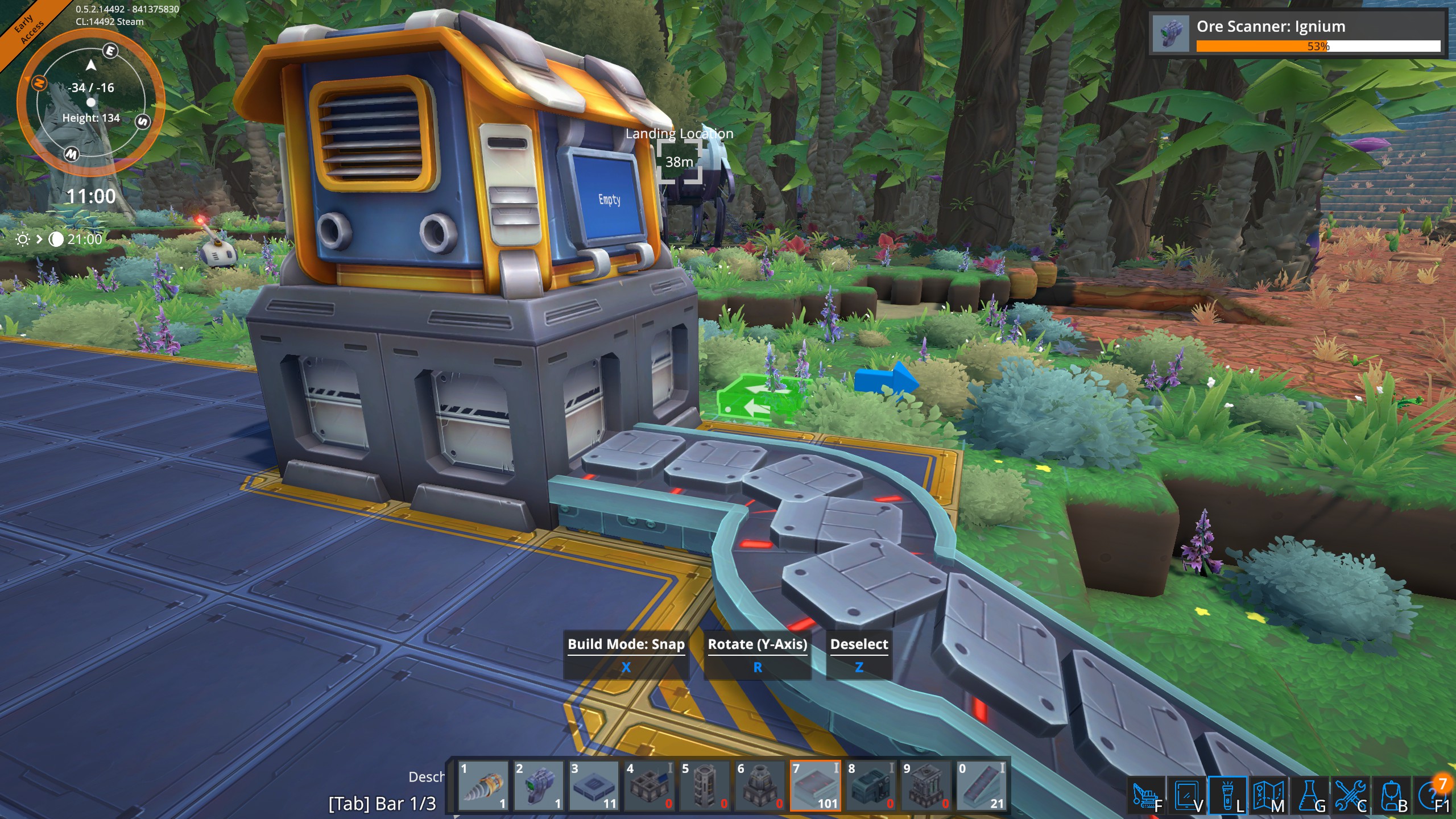
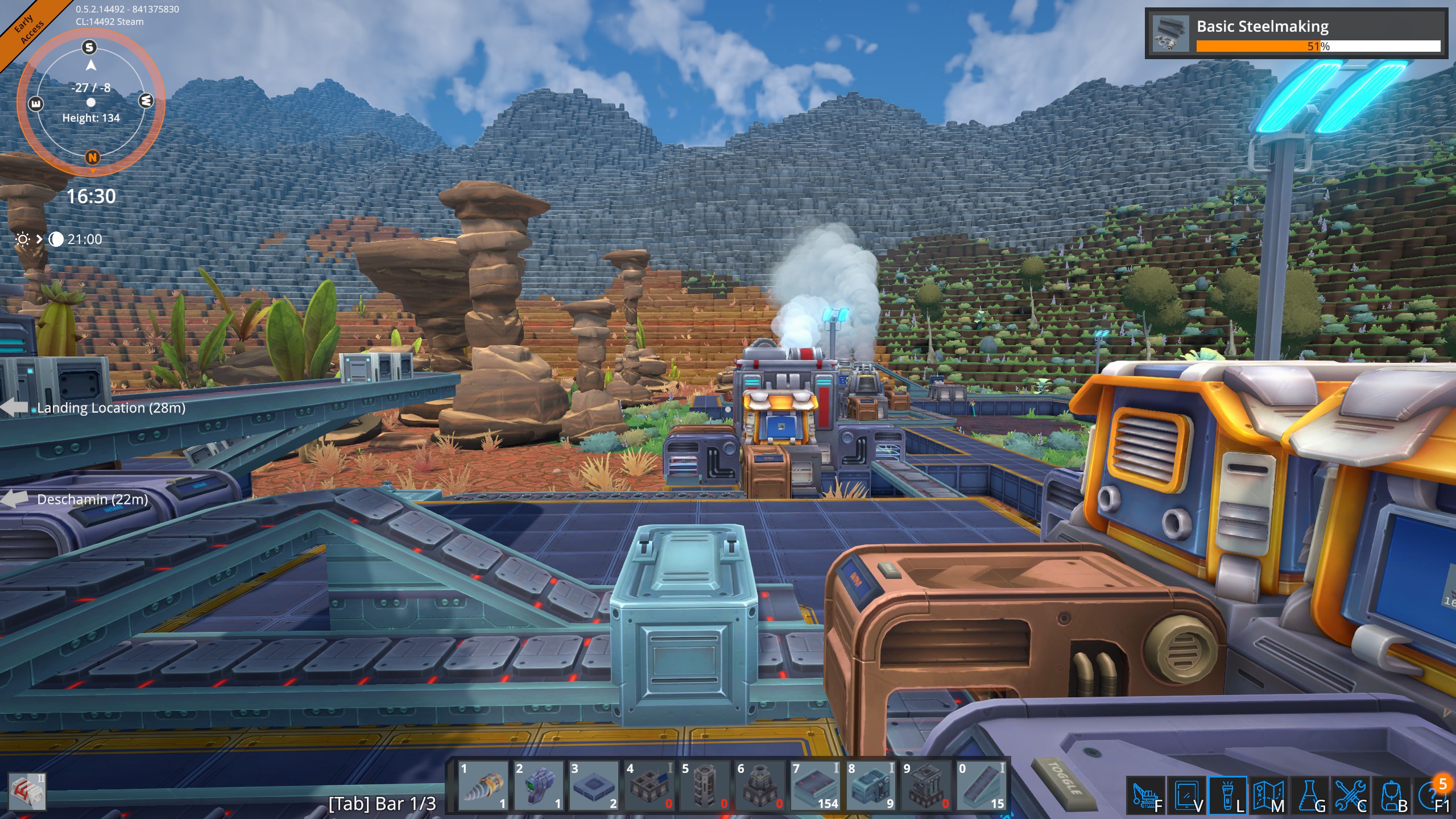
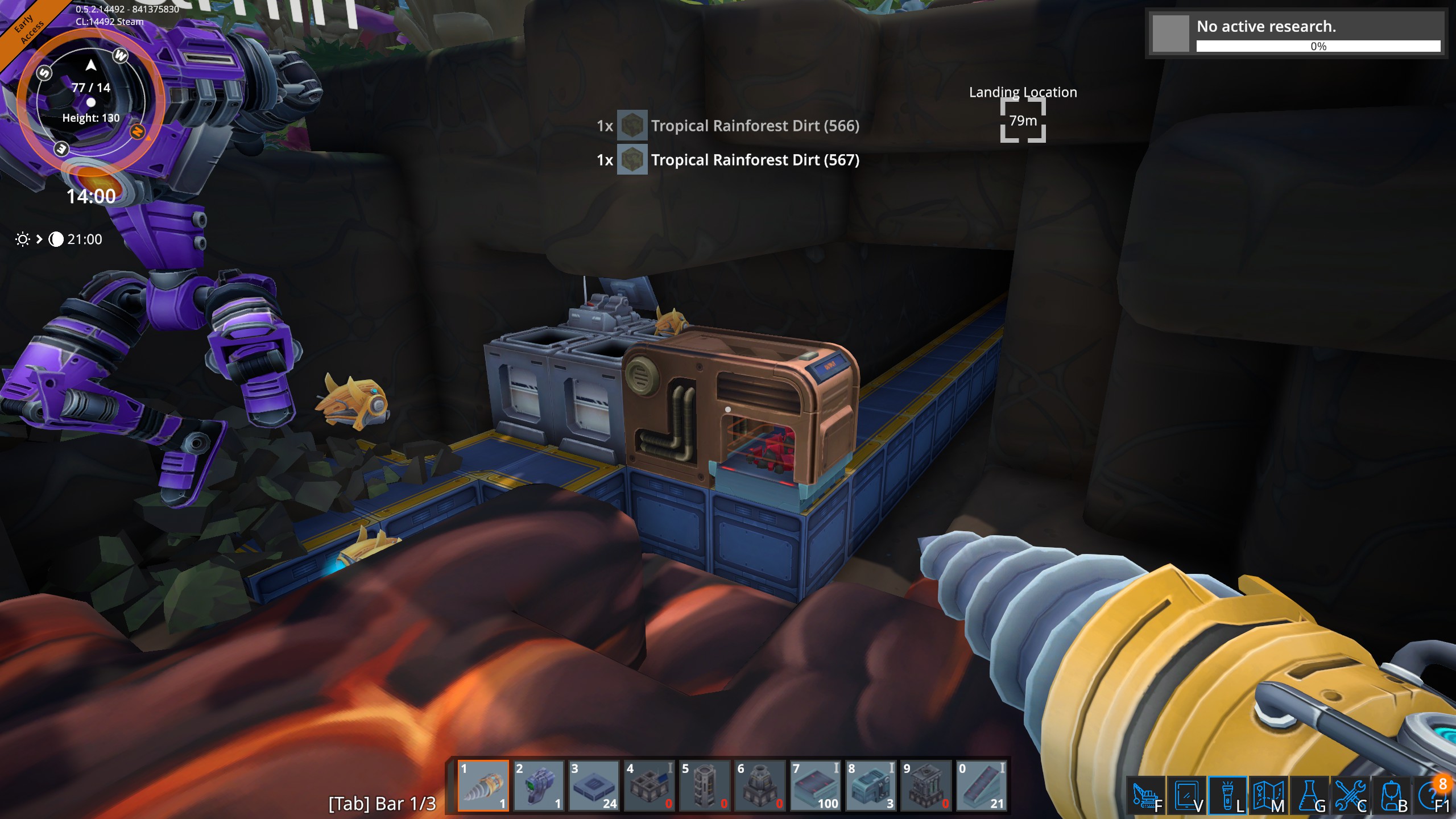
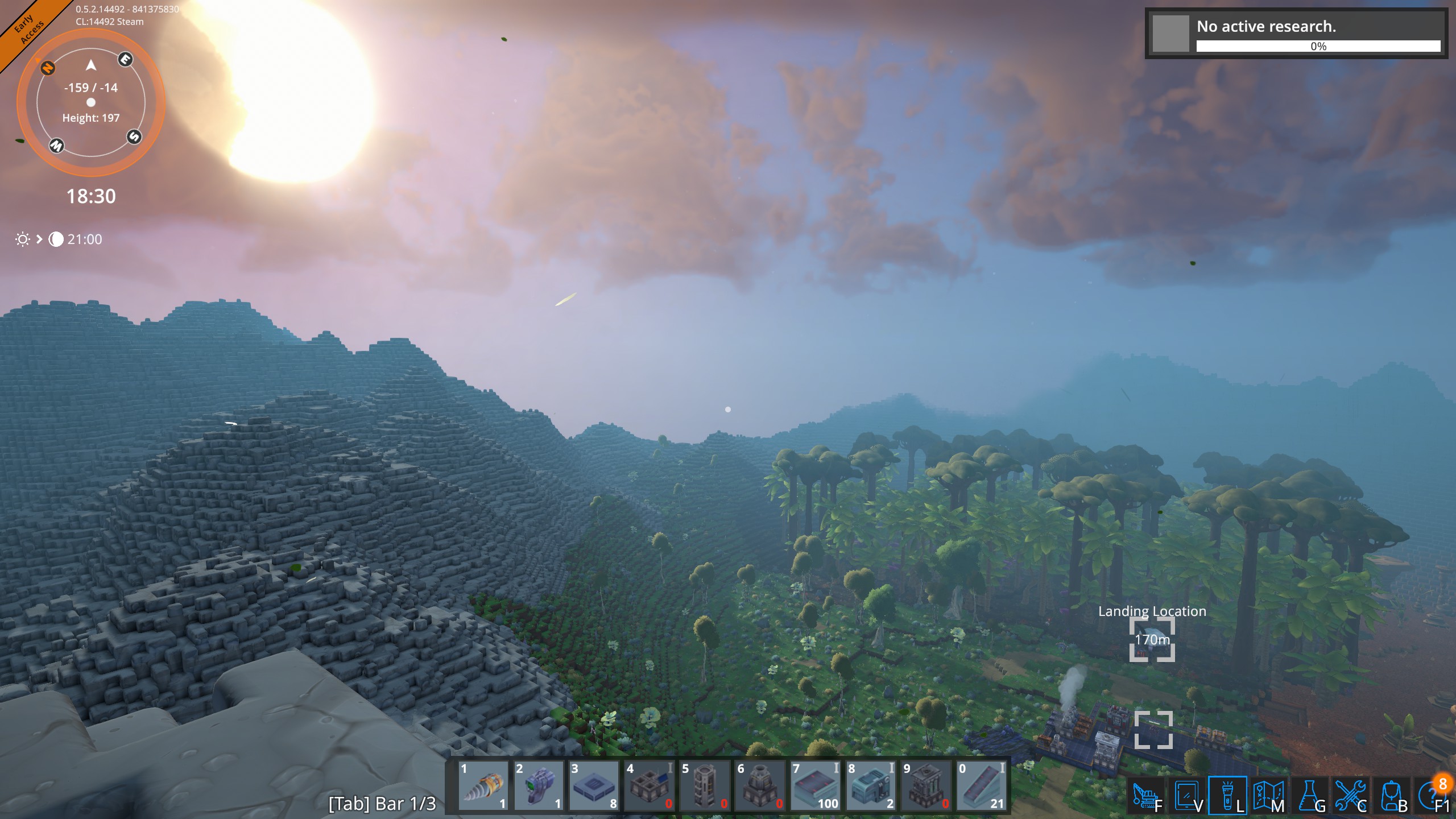
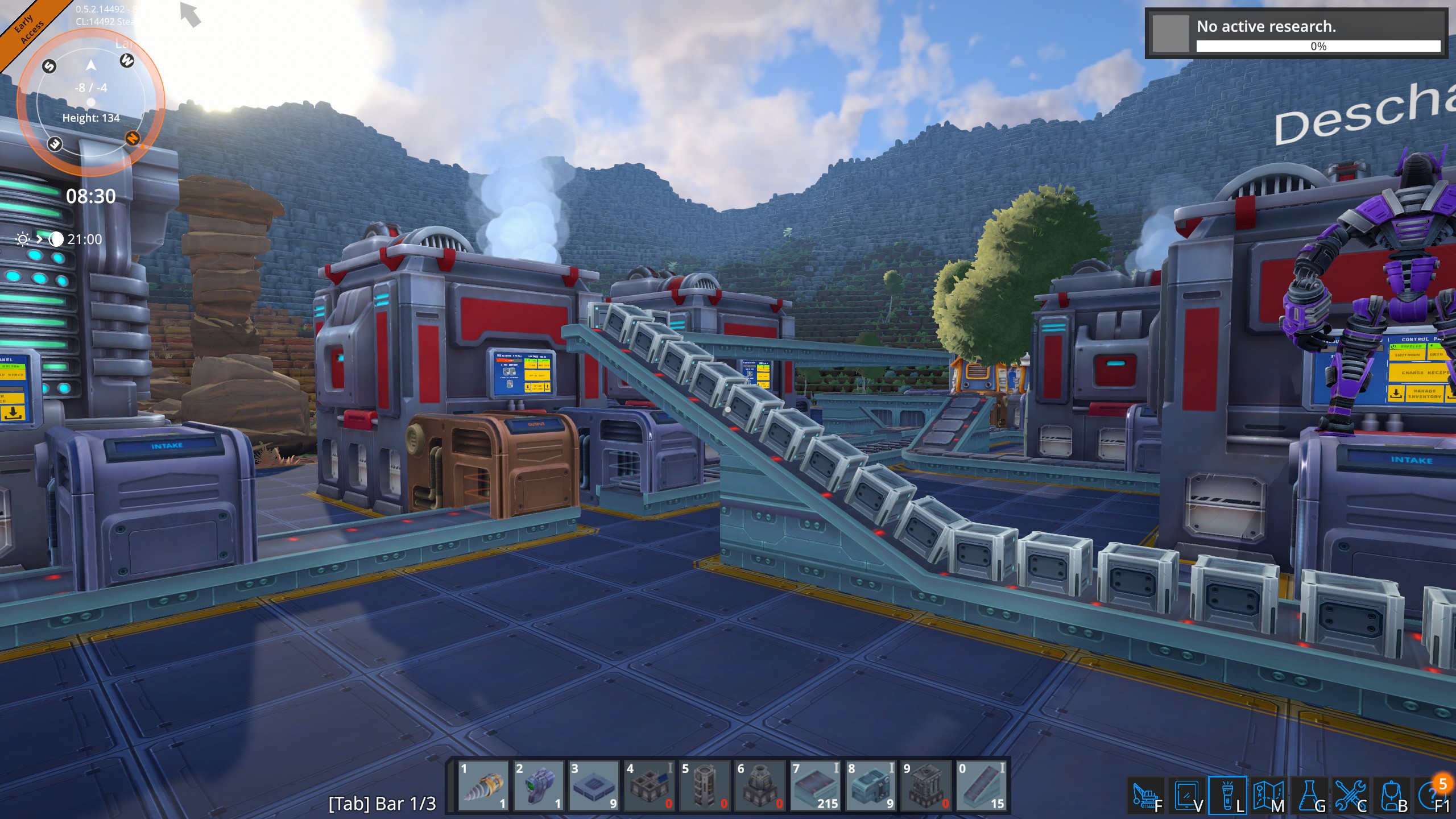
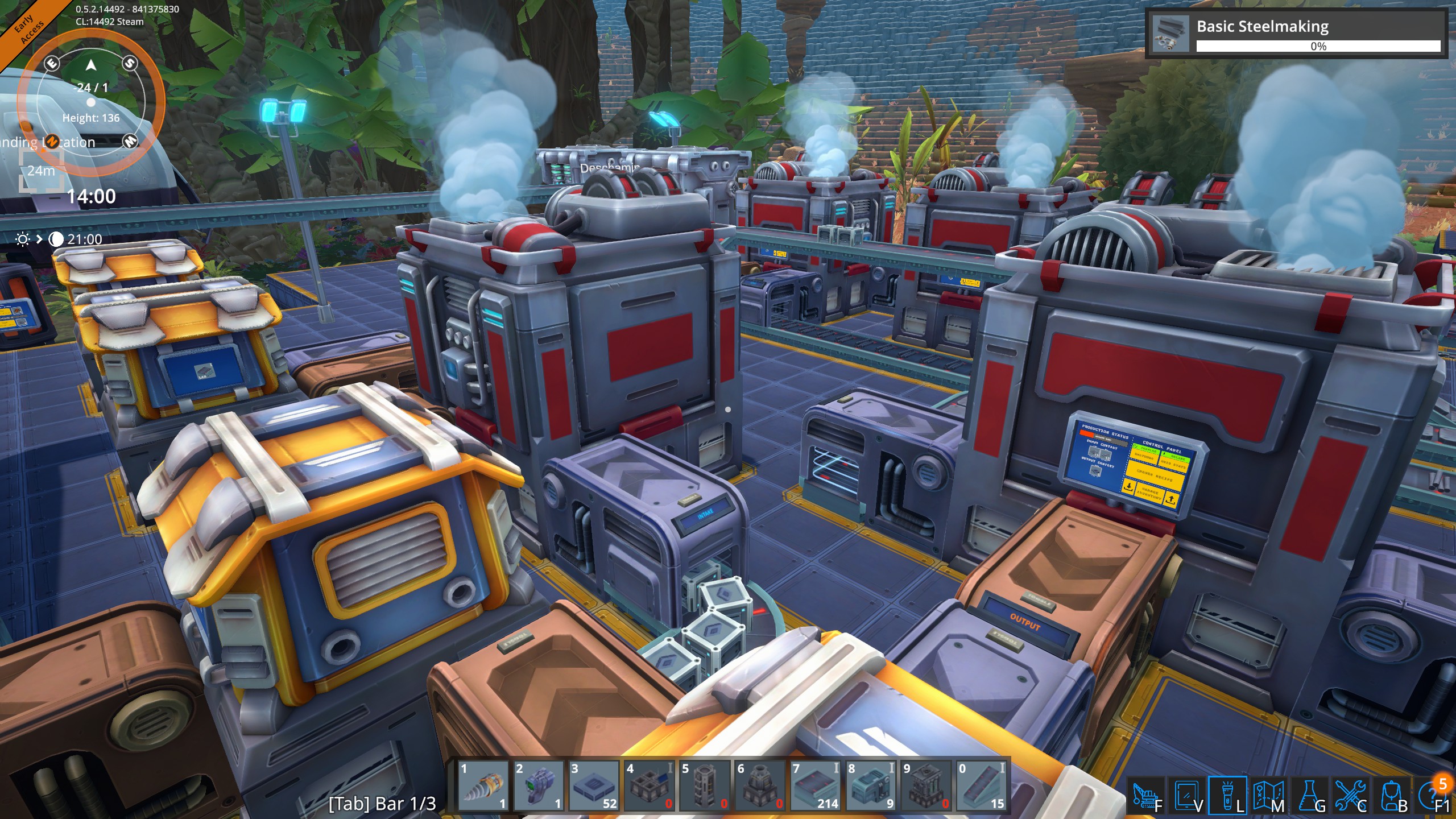
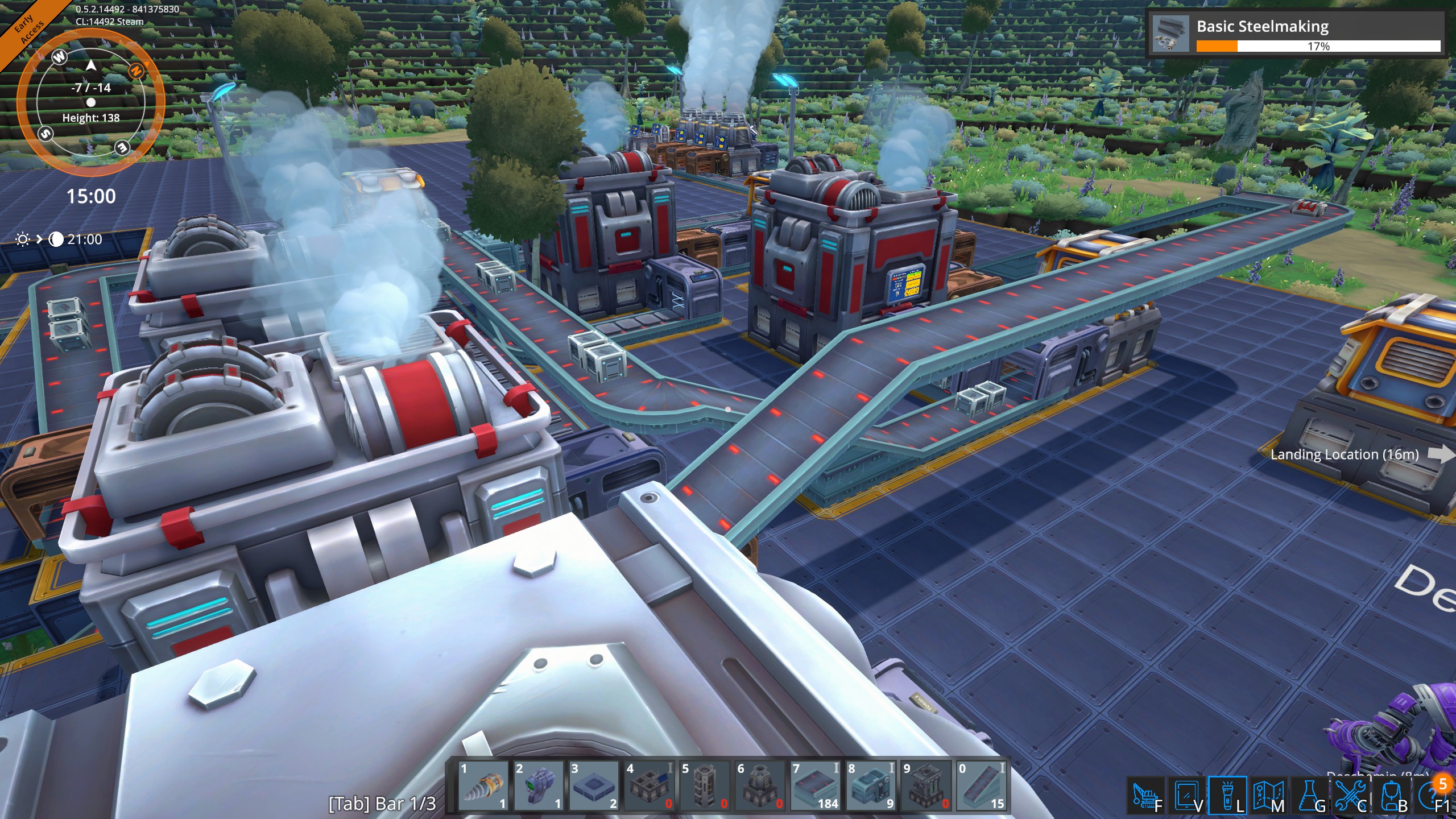
Looking at Foundry's enormous tech tree I have no doubt it'll balloon in complexity just like Satisfactory did, but at least with this early access launch it largely seems to be offering building for the pure sake of building, without much friction to make that building feel like an accomplishment. It offers some nice quality of life features, like being able to copy/paste both environmental blocks and constructed buildings. But it's also tedious and fiddly in some ways that other building games already do better, like connecting conveyor belts—perhaps it's a limitation of the voxel world grid, but I don't like having to manually stick a curved piece on a conveyor run instead of being able to freeform drag it to wherever I want it to go.
It seems impressively stable for this sort of game going into early access, though—co-op was seamless and performance is hunky dory on my i5-13700K and RTX 3070, though I have yet to build any city-sized odes to production.
Ultimately if I wanted to build things in a voxel world like this I think I'd rather play Minecraft, a game with a rich framework for character progression and unique challenges to overcome in different biomes. When it comes to the satisfaction of automation, Satisfactory's more threatening world and its objectives force you to fight for progress and eventually become more and more ambitious. Builders who need nothing but their imagination to fuel them will love Foundry's more chill approach. It's just not quite spiky enough to grab me, but I'll be keeping an eye on the roadmap to see if enemies, environmental hazards or other threats end up on the horizon during early access.

Wes has been covering games and hardware for more than 10 years, first at tech sites like The Wirecutter and Tested before joining the PC Gamer team in 2014. Wes plays a little bit of everything, but he'll always jump at the chance to cover emulation and Japanese games.
When he's not obsessively optimizing and re-optimizing a tangle of conveyor belts in Satisfactory (it's really becoming a problem), he's probably playing a 20-year-old Final Fantasy or some opaque ASCII roguelike. With a focus on writing and editing features, he seeks out personal stories and in-depth histories from the corners of PC gaming and its niche communities. 50% pizza by volume (deep dish, to be specific).

